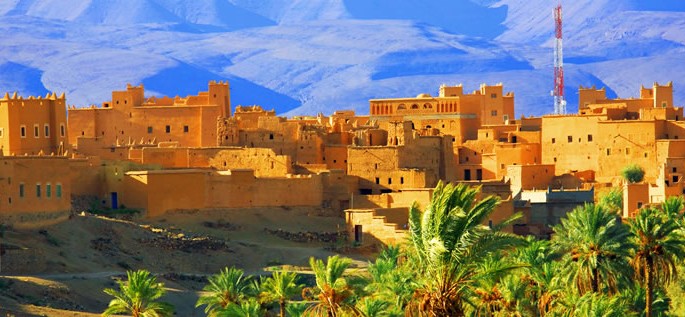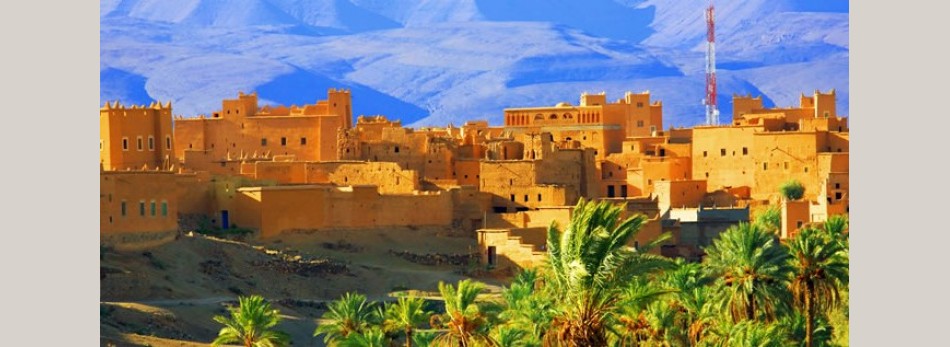Berber Branch

The Berber languages are a group of 26 closely related languages that constitute a branch of the Afro-Asiatic language family. They are spoken by 14 to 25 million people in Northern Africa throughout the Mediterranean coast, the Sahara desert and Sahel, an area which used to be dominated by Berbers before the arrival of the Arabs. Today, there are large groups of Berber-speaking people in Morocco and Algeria, Mali, Niger and Libya, and smaller groups in Tunis, Mauritania, Burkina-Faso and Egypt. Speakers of the various Berber languages make up around 50% of the population in Morocco, and about 25% in Algeria.The Tuareg of the desert also belong to the Berber group.
The oldest known Berber inscriptions date back to the 4th century BC, but Berber-speaking people have lived in North Africa since at least 3,000 BC, and references to them occur frequently in ancient Egyptian, Greek, and Roman sources. The name “Berber” comes from the Greek word barbaros ‘barbarians.’ It is understandably disliked by many Berbers who prefer the term “Tamazight” which is often used instead, particularly with reference to Northern Berber languages. However, “Tamazight” also refers to a language spoken in the Atlas Mountains region of Morocco, thus creating terminological confusion.
It is estimated that there are between 14 and 25 million speakers of Berber languages, but exact numbers are difficult to ascertain, since most Maghreb countries do not record language data in their censuses, and many Berber-speaking people are hard-to-reach nomads. In addition, these languages go by different names — a factor that confuses the issue of whether these are dialects of one language or are different languages.
The table below is based on data reported by Ethnologue and includes only languages with speaker populations of over 100,000.
| Tachelhit | 3 million | Morocco |
| Tamazight | 3 million | Morocco |
| Kabyle | 2.5 to 6 million | Algeria |
| Tarifit | 1.7 million | Morocco |
| Tachawit | 1.4 million | Algeria |
| Tamajaq | 640,000 | Niger |
| Tamasheq (Tuareg) | 281,000 | Mali |
| Tamajeq | 250,000 | Niger |
| Nafusi | 167,000 | Libya |
-
Morocco and Algeria
After independence from France, all Maghreb countries pursued a policy of Arabization in an attempt to replace the hitherto dominant French with Arabic, and to marginalize, or even eradicate minority Berber languages. As a result, until the early 1990s, Berber was excluded from all official use, as well as from all education. However, as a result of protests in Morocco and Algeria, Berber languages were recognized and Berber language education was introduced in these countries. Tamazight was recognized as a national language in 2002. In Morocco, government radio regularly broadcasts in Tachelhit, Tamazight, and Tarifit, although these languages are not recognized officially. In Algeria, radio broadcasts in Kabyle have survived since colonial times. -
Niger and Mali
In Mali and Niger, there are a few schools that teach partially in Tamasheq (Tuareg) that was officially recognized as a national language in both countries since they gained their independence in 1960. Two radio stations in Niger and at least one in Mali broadcast in Tamasheq.
Dialects
Berber languages vary in the number of dialects. Those spoken in several countries have the greatest dialect variability. However, the information on the dialectal divisions of the Berber languages is not very well developed.
Structure
Despite a great deal of variation in the sound systems among Berber languages, they tend to be characterized by the several common features:
Vowels
Berber languages generally have three vowels. Vowels can be short or long. Vowel length makes a difference in word meaning.
|
Front
|
Central
|
Back
|
|
|---|---|---|---|
| Close |
i
|
xx |
u
|
| Mid | xxx | ||
| Open |
a
|
xx |
Consonants
These features are present in many, but not all Berber languages:
- Contrast between plain and emphatic (glottalized) consonants which are produced with the space between the vocal cords (glottis) constricted during their pronunciation. This results in a creaky voice.
- Implosive consonants which are produced with the air inhaled rather than exhaled.
- Ejective consonants produced with a simultaneous closure of the glottis which results in a strong burst of air accompanying their release.
- Geminate (doubled) consonants produced by holding them in position longer than for their single counterparts.
- A variety of velar, uvular, pharyngeal and glottal consonants produced in the back of the oral cavity.
- Contrast between labialized and plain velar and uvular consonants. Labialized consonants are produced with a simultaneous rounding of the lips while the sound is being articulated.
- Like many Afro-Asiatic languages, native Berber words do not have the consonants /p/ and /v/. These sounds occur only in borrowed words.
Berber languages share some basic features in their grammatical systems.
Nouns
Berber nouns are marked for the following features:
-
state
There is a absolute and a construct state. The latter is used when definite noun is followed by another noun in a genitive relation to the first. -
number
There are two numbers: singular and plural. The plural of nouns has a masculine and a feminine form. The form of the plural depends on the type of noun, as in these examples from Tamazight:External plural which consists of changing the initial vowel of the noun, and adding a suffix –n, e.g., afus ‘hand’ and ifassn ‘hands’;
Internal plural which involves vowel change in the root, e.g., abaghus ‘monkey’ and ibughas ‘monkeys’;
Mixed plural which utilizes both devices described above, e.g., iziker ‘rope’ and izakaren ‘ropes’. -
gender
There are two genders: masculine and feminine. Masculine gender is unmarked.
Verbs
Berber verbs agree with their subjects in person, gender and number.
- Person, gender and number of the subject are represented by affixes attached to verb roots.
- Verbs have several tense/aspect distinctions,depending on the language.
- There are three moods: indicative, imperative, and subjunctive.
- Imperatives are unmarked in the singular and marked for gender in the plural.
Word order
The predominant word order in Berber languages is Verb-Subject-Object.
Most of the vocabulary of Berber languages is Berber in origin with borrowings from Latin, Arabic, French, Spanish, and other sub-Saharan languages. Probably the major source of borrowing is Arabic.
Below are the numerals 1-10 in four Berber languages.
|
1
|
2
|
3
|
4
|
5
|
6
|
7
|
8
|
9
|
10
|
|
|---|---|---|---|---|---|---|---|---|---|---|
| Tamazight |
yun
|
sin
|
shradh
|
rb`a
|
hemsa
|
setta
|
seb`a
|
thmanya
|
ts`a
|
`eshra
|
| Tarifit |
iy
|
zenaim
|
zeraza
|
erbâa
|
jemsa
|
setta
|
sebâa
|
zemenya
|
tesêa
|
âshra
|
| Tamasheq(Tuareg) |
iyan
|
esshin
|
kerâd
|
ekkoz
|
semmos
|
saedis
|
essa
|
ettam
|
teza
|
meraw
|
| Tachelhit |
yan
|
sin
|
krad
|
kkruz
|
semmus
|
sdis
|
sa
|
ttam
|
ttza
|
mraw
|
Writing
There is no standard orthography for Berber languages. Differences in their sound systems make it difficult to develop a unified standardized orthography for all of them. At present, Berber languages are written with Roman, Arabic and Tifinagh alphabets.
- The Berber Latin alphabet contains the 23 standard letters, 7 modified letters and 2 letters borrowed from the Greek alphabet. It omits the contrast found in Kabyle and Tarifit between stops and fricatives.The Tuaregs of Mali and Niger use a somewhat different orthography.
- The Tifinagh alphabet is thought to have been derived from the Phoenician alphabet. It is used by the nomadic Tuareg people who inhabit a large part of the Sahara desert and the north-central part of Sahel. Tifinagh has become official throughout Morocco, while the Arabic and Latin alphabets continue to be used unofficially online and in various publications. However, unlike the nearby Tachelhit, Tarifit has little Tifinagh literature written prior to the 20th century.
- Tachelhit has been written in the Arabic script since the second half of the 16th century.
- Tamazight has been a written language for almost 3,000 years. It was first written in Tifinagh.
- Kabyle’s growing use as a modern, written language has increased the use of an adapted Roman script. In Morocco, however, it is still mostly written with the Arabic script.
- Tarifit has been written with several different scripts over the years.
Take a look at Article 1 of the Universal Declaration of Human Rights in Tamazight in Latin and Tifinagh alphabets.
|
Tamadda 1: Imdanen, akken ma llan ttlalen d ilelliyen msawan di lhwerma d yizerfan- ghur sen tamsakwit d laquel u yessefk ad-tili tegmatt gar asen. |
 |
|
Article 1 All human beings are born free and equal in dignity and rights. They are endowed with reason and conscience and should act towards one another in a spirit of brotherhood. |







